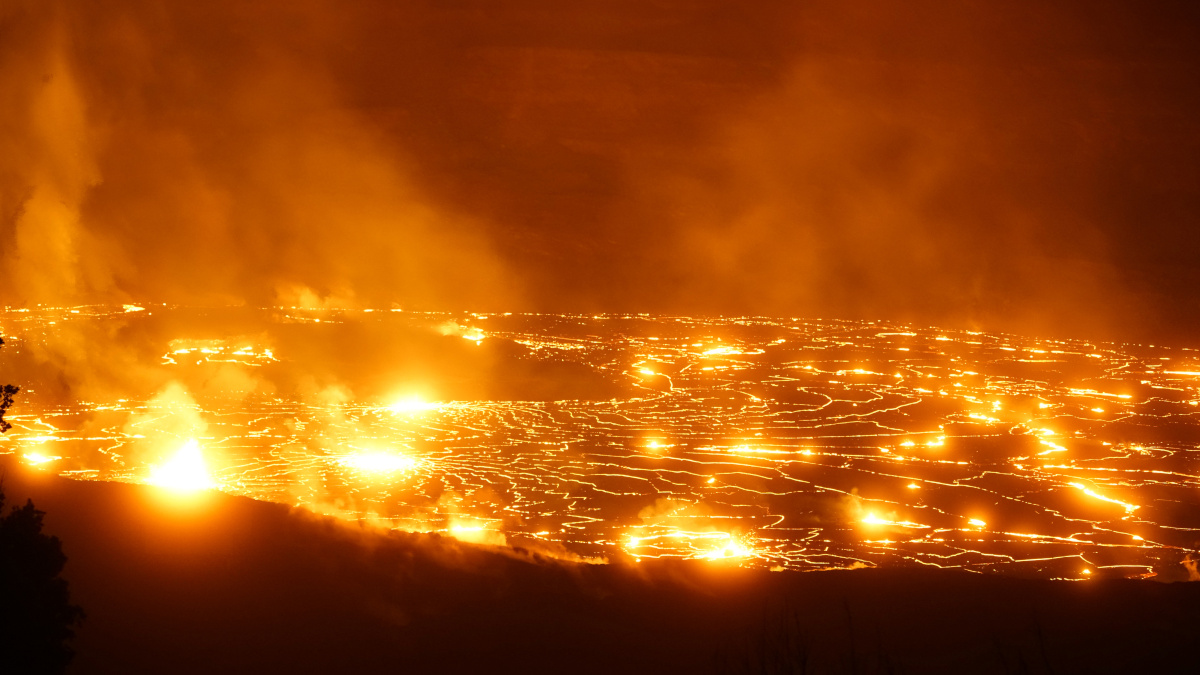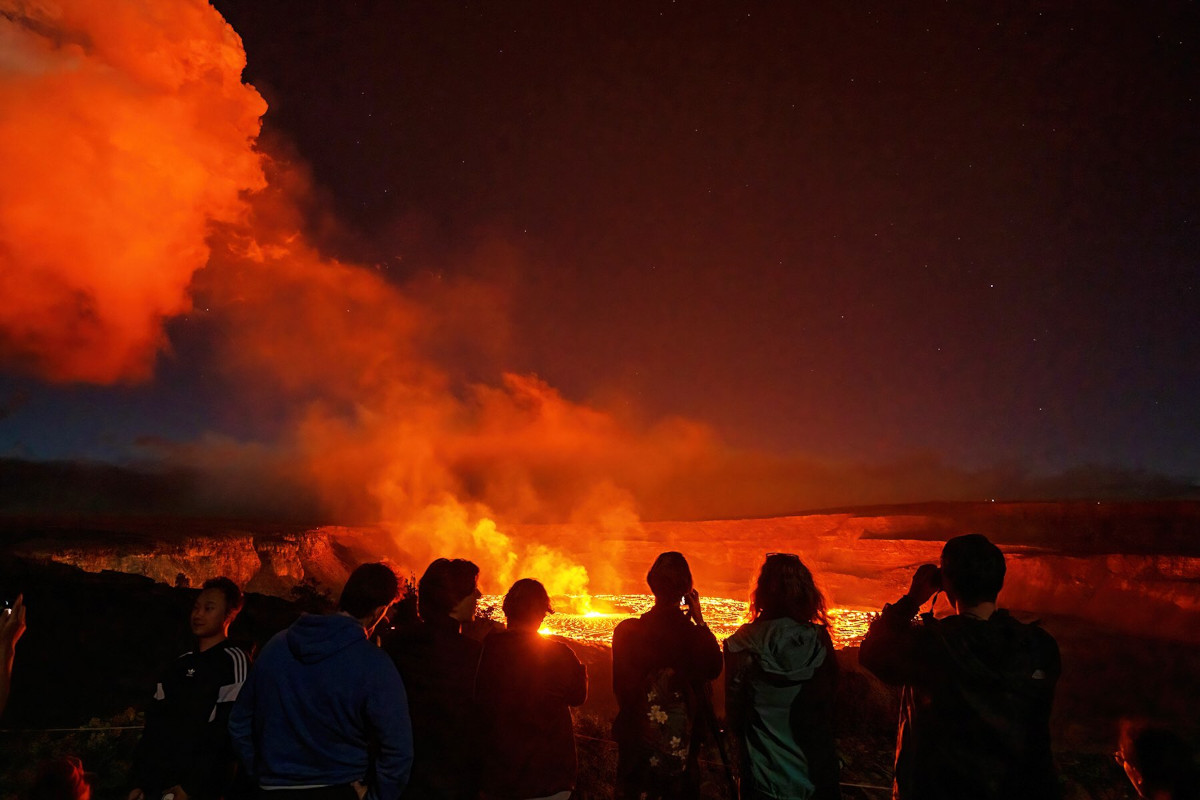(BIVN) – Officials say the ongoing eruption at the summit of Kīlauea is drawing thousands of visitors to Hawaiʻi Volcanoes National Park, where the resumed activity “is viewable from almost all open areas around the caldera.”
On Friday, the National Park Service issued a news release with safety tips for visitors, as well as a reminder to keep an eye out for nēnē, the native geese that are presently breeding and nesting in certain areas of the park.
“While the park remains open 24 hours a day, Puʻupuaʻi Overlook and parking lot are closed to protect breeding and nesting nēnē,” the news release stated. “The overlook west of the Uēkahuna parking lot also remains closed to protect nēnē. The restrooms, parking lot and viewing areas to the east remain open.”
The public is also reminded:
- Volcanic eruptions can be hazardous and change at any time. Stay on marked trails and overlooks, and avoid earth cracks and cliff edges. Do not enter closed areas.
- Hazardous volcanic gases are billowing out the crater and present a danger to everyone, especially people with heart or respiratory problems, infants, young children and pregnant women. Check the park air alert web page before and during your visit.
- Slow down and drive safely. Expect long waits for parking spaces at popular vantage points like Uēkahuna (formerly the Jaggar Museum) and Devastation Trail parking area.
- Do your part to help protect nēnē by keeping your distance, at least four car lengths away, and never feed nēnē or wildlife. Handouts make nēnē seek out people and cars, putting them in great danger. Drivers should be alert for nēnē along park roads, always observe the speed limit, and slow down for all nēnē crossing signs in the park and throughout the island.
- At 1,219 meters, (4,000 feet), the summit of Kīlauea can be chilly at any time. Bring a rain jacket, wear long pants and closed-toe shoes. Bring a flashlight if visiting at night.
As far as what visitors to the park can expect to see, the National Park Service says:
In the Dark. A magnificent reddish orange glow fills the dark sky. Lava flows have covered much of Halemaʻumaʻu crater floor (which is nearly 300 acres or 120 hectares), reflecting into the gas plume wafting out of the volcano, and onto any clouds above. Jagged crater walls are illuminated, showing the scars from the 2018 summit collapse.
In Daylight. Volcanic gas and steam billow out of Halemaʻumaʻu, and the entire summit caldera, Kaluapele, is fully visible. Koaʻe kea, white-tailed tropicbirds, are often observed flying above the crater.
“While an eruption is an exciting experience, keep in mind you are observing a sacred event,” the National Park Service said. “The summit of Kīlauea volcano is a wahi kapu (sacred landscape) surrounded with storied places and a fragile ecosystem.”



by Big Island Video News9:26 pm
on at
STORY SUMMARY
HAWAIʻI VOLCANOES NATIONAL PARK - The National Park Services says "safety and species preservation are key" for latest eruptive activity at Kīlauea.